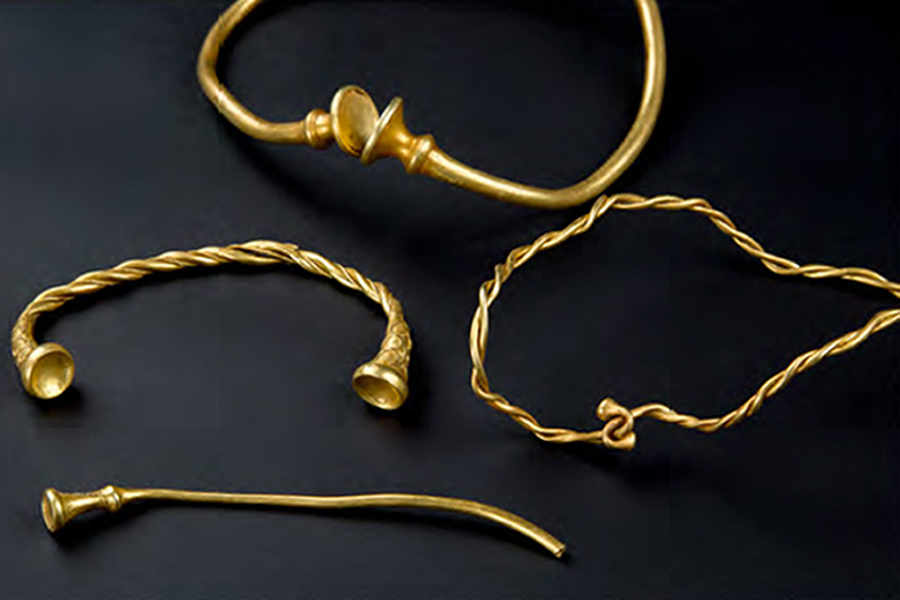Two metal detectorists unearthed artefacts which could be the oldest Iron Age gold discovered in Britain. Mark Hambleton made the find with Joe Kania on Staffordshire Moorlands farmland. The three necklaces and bracelet, named the Leekfrith Iron Age Torcs, are believed to be about 2,500 years old. Julia Farley of the British Museum said that this unique find is of international importance.
Dr Farley, the museum’s curator of British and European Iron Age collections, said: “It dates to around 400-250 BC and is probably the earliest Iron Age gold work ever discovered in Britain. The torcs were probably worn by wealthy and powerful women, perhaps people from the Continent who had married into the local community. Piecing together how these objects came to be carefully buried in a Staffordshire field will give us an invaluable insight into life in Iron Age Britain.”
The four torcs were found separately, about 1m apart, buried near the surface in Leekfrith last December. The artefacts have been handed to the Portable Antiquities Scheme, which is part of Birmingham Museums. An inquest will decide whether the pieces are treasure and they will then be provisionally valued. The friends said they would share any proceeds with the family living where the finds were made.
Read more: http://www.bbc.co.uk/


